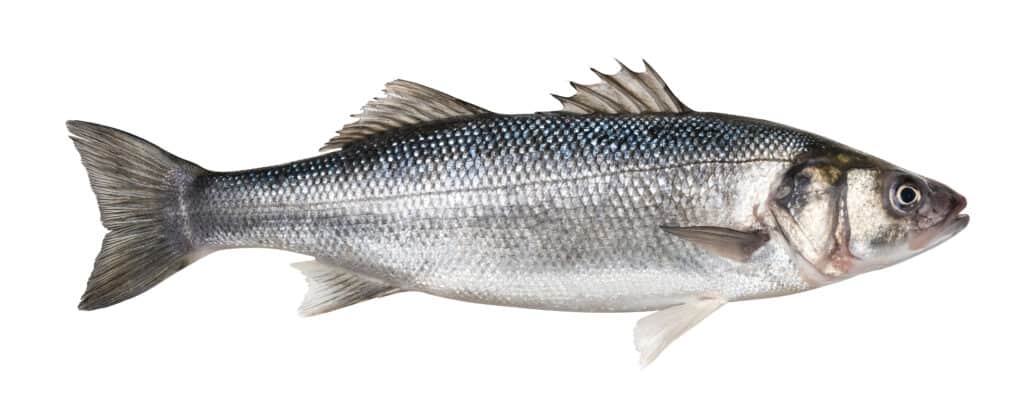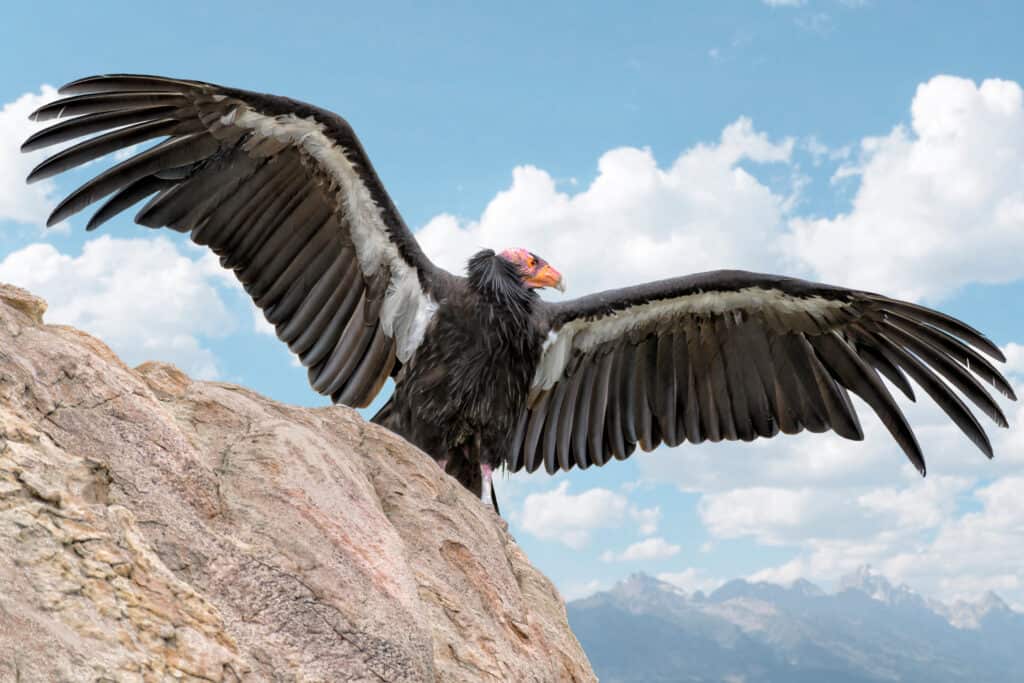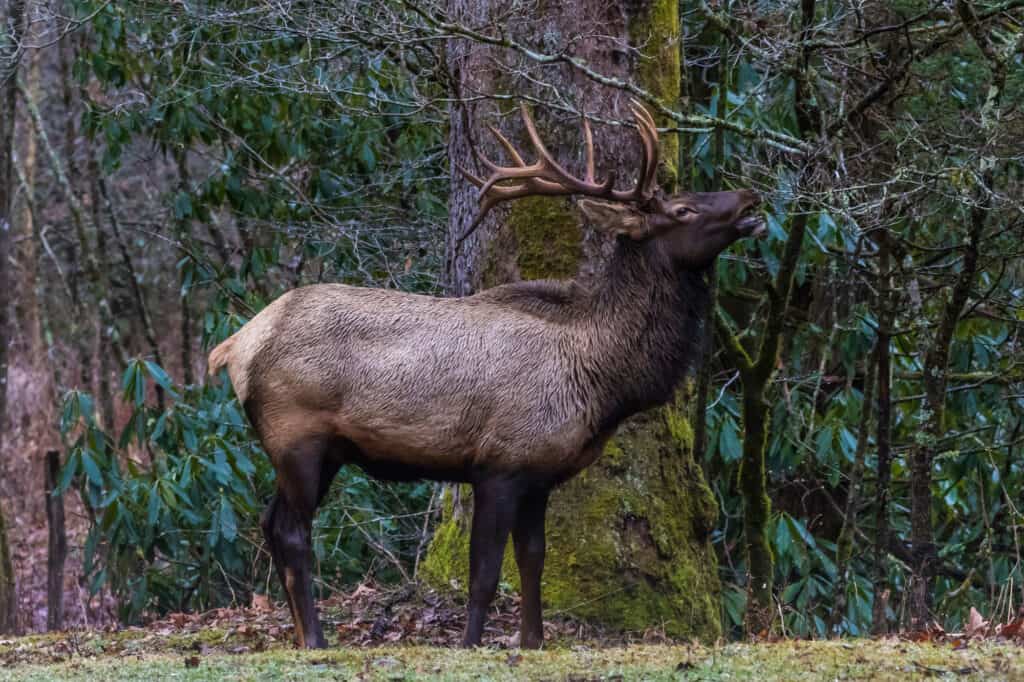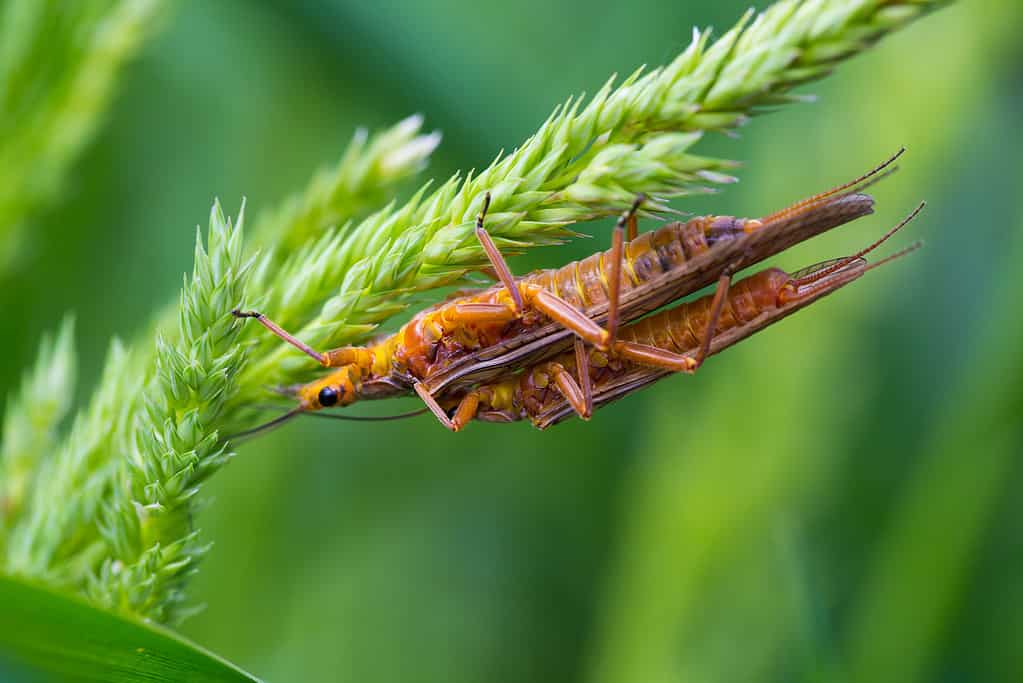California is a long and expansive state stretching along the coast of the Pacific Ocean. It covers many diverse topographies like beaches, deserts, valleys, and mountains. The state’s many different ecosystems host some of the most unique and incredible nature and wildlife in the United States. In terms of size, you might want to know what to watch out for in this crazy state. Here are some of the largest animals in the state of California.
Largest Fish
There are several fish that can be found in the state, but none compare to the size of the largest fish in the state.
Giant Seabass

In California, the largest giant seabass reported was 557 pounds.
©Spalnic/Shutterstock.com
You can find the giant seabass in its natural habitat of kelp forests. Nicknamed “the king of the kelp,” it is California’s largest nearshore bony fish, with the largest reported length of 7.5 feet and 557 pounds. This fish swim close to the shore over colorful reefs, shallow sands, ledges, and drops off.
The giant seabass is a top predator and will eat almost everything by opening its enormous mouth from stingrays, squid, lobster, sardines, white croaker, flatfishes, and small sharks. The giant seabass usually swims rather slowly, but don’t be fooled by its slow speed. This fish is a short-distance swimmer and will chase down its prey like the Pacific Bonito before it gets the chance to get away.
A female seabass can release up to 60 million eggs that can be fertilized. The ear bones on the seabass indicate how long the bass has been alive. This fish can live up to 70 years if a great white shark or fisherman doesn’t find them first.
The Largest Bird
Of all the birds you can see in California, keep an eye out for the largest bird in the state.
California Condor

California condors have a 9-foot wingspan and can fly for hours without flapping their wings.
©Barbara Ash/Shutterstock.com
One of the largest animals in California is the California Condor. The California Condor is not just the largest bird in California; it is one of the largest flying birds in the world. It has a wing span, tip to tip of up to nine feet, and weighs over 20 pounds. The Andeann Condor of South America is even larger than the California Condor; both are on the endangered species list and need human help to protect them.
To hunt, the California Condor flies thousands of feet up into the air and can fly for hours without flapping their wings. They can glide long distances reaching speeds up to 55 miles an hour. This condor will only feed on dead animals they find, like deer or cattle, while searching in the air. The dead animals that they feed on are called carrion.
The California Condor makes homes in mountains where there are cliff caves. This is where they settle their nest. They make their nests in large cavities in tree trunks, specifically in giant sequoia redwoods. This bird only raises one chick at a time, laying eggs in late winter or spring. The eggs take two months to hatch, but it takes over a year from when the egg is laid for the young condor to survive on his own.
California condors used to live in many different parts of North America other than California, including Texas, Florida, and New York. They fed on dead cattle, sheep, and deer and have remained limited to this small area in California ever since.
Humans have been the biggest predator of condors for the past two centuries, and it has been illegal to kill any since a signed Assembly Bill in 2007. Condors are also at risk to potential human structures like wires. There are so many threats to the condor population that they can’t survive without the help of humans.
Largest Land Mammal
The largest land mammal in California is a majestic animal.
Elk

Elk run in herds of 12-20 and are a vital wildlife resource in California.
©iStock.com/DimitrisTimpilis
The elk is the largest land mammal in California, residing in open country in semi-desert conditions. The Tule elk occupy much of the state’s central portion and are found only in California. Depending on the time of year, they run in herds of 12-20 elk.
Males can weigh as much as 45 to 550 pounds, and females weigh 375 to 425 pounds. Due to habitat destruction and overhunting, elk have moved to better grazing areas, making them grow larger than other subspecies. As a result, elk are a vital wildlife resource and have increased in population over the past couple of decades. The current population is around 5,700 elk. You can find them in the grasslands and marshlands of the Central Valley to grassy hills along the coast.
Largest Sea Mammal
Being a coastal state means a large variety of sea mammals.
California Gray Whale

The California gray whale can be found all along the state’s coastal edge all the way down to Baja, California.
©Mogens Trolle/Shutterstock.com
California has an abundance of sea life as the state is nestled right on the Pacific Ocean. The California gray whale is found in small groups along the California coast to Baja, California. These whales migrate over 14,000 miles a year, live in the Bering Sea in the summer, and then travel to California in the winter. Gray whales eat small crustaceans on the ocean floor along the way. The gray whale can grow up to 50 feet long and weigh 90,000 pounds. California whale watchers will have the best luck seeing the whale from December to May.
Largest Snake
Not all of the animals in California are majestic. Learn about the largest snake in the state and if it is poisonous.
Pacific Gopher Snake

The Pacific gopher snake can reach up to 279 centimeters in length.
©Eric Isselee/Shutterstock.com
The Pacific gopher snake is one of the largest animals in California. It is one of six subspecies of gopher snakes and is the largest snake found in California, reaching lengths of up to 279 centimeters. This snake has a small head and a narrow snout. They have tan bodies and dark blotches and live in deserts, prairies, brushland, woodlands, forests, and farmland. They feed on lizards, eggs, and insects and behave similarly to rattlesnakes when threatened. When threatened, they hiss loudly, have tail vibrations, and even lunge at their attacker, but unlike rattlesnakes are not venomous.
Largest Insect
The largest insect in California belongs to the stonefly species.
Giant Salmon Fly

The salmonfly can become nearly three inches in length.
©iStock.com/joshuaraineyphotography
These flies are California’s largest insects and belong to the stonefly species. These bugs can grow to be almost three inches in length. You can find these bugs in the western states of Colorado, Oregon, California, and Montana.
The giant salmon fly likes to live near streams and rivers. When the salmon fly nymphs hatch in late May to early July, it signals an exciting season for fishermen to catch large trout and other fish. Adult flies are very weak fliers, making them easy pickings for feeding trout or insectivorous birds.
Salmon flies are easy to identify due to their size. The adult flies have a bright orange or red band behind the head. You can find these flies on the coast of California, Cascade, Rocky and Sierra Nevada Mountains, Alaska, and southward to Mexico. Salmon fly nymphs feed on leaves on the floor around cobbles and rocks. These flies require well-oxygenated water, so they thrive in swift, bouldery stretches of the river. They have a life cycle of up to three to four years, depending on the elevation of where they live.
The photo featured at the top of this post is © iStock.com/Matthew Starling
Thank you for reading! Have some feedback for us? Contact the AZ Animals editorial team.






